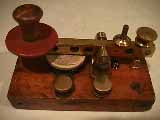|
|
|
MODULE III - INTERNATIONAL MORSE CODE
FREQUENTLY ASKED QUESTIONS Do I need to learn Morse code to get my ham radio license? No. You do not need to learn Morse code to become a ham. The basic entry level license, the Novice Class (Class D), requires only a simple theory test with no Morse code requirement. You do need to take a Morse code test to get access to the amateur shortwave (HF) worldwide bands, which offer you the ability to talk to hams all over the world What's the best way to study Morse code? There is no best method for everyone. Whatever method you choose to use, you should ensure that it emphasizes learning the -sound- of the letters. You should learn to recognize that the sound ditdah is equivalent to the letter A. You should NOT try to learn dots and dashes or count them on your fingers or in your head. What's better: tapes or a computer program? There are certainly good points to both. Tapes generally provide a good introduction to the code, so we generally recomend that people begin to learn Morse by starting with tapes. The problem with tapes is that they quickly become repetitive. By the fourth time you listen to a tape, you have likely memorized most of the code runs and the tape is of little value. The advantage of the computer programs is that they are able to randomly generate an infinite number of random code runs and simulated on the air QSOs. |
|
Should I practice sending? Whether or not you practice sending is up to you. Some people report that sending Morse code helps them in their code comprehension. In our experience, we have found sending Morse code to be of little value in studying to pass the amateur radio exams. So, while it can't hurt, we recomend that if you do choose to incorporate sending Morse into your practice, that you make it a small part of your overall study program. What is the format of the test? The exam begins with a series of V's or AR's followed by about 5 minutes of sent Morse code, usually 5-lettered group of words. For Technician Class (Class C), the speed requirement to copy the sent Morse code is 7 WPM. Copy as much as possible. If you miss a letter just keep going. Put a little tick mark on your paper so that you can tell that you missed a letter. The exam ends with a series of SK's. At the end of the five minutes, you will have the chance to go over your paper and fill in as many missed letters as you can. For instance, if you copy "q_est" you can easily fill in the missed letter to make the word "quest." "Receiving - The candidate will be required to copy with or without a headset, a text containing a combination of plain words, "Q" signals and distress signals. He shall be considered "Passed" if no error is committed during a period of one (1) minute reception and provided further that at least 2/3 of the entire text for five (5) minutes is transcribed." -Section IV-4.4, Ministry Circular No. 87-174.
|



